- Home
- Edgar Allan Poe
The Narrative of Arthur Gordon Pym of Nantucket Page 21
The Narrative of Arthur Gordon Pym of Nantucket Read online
Page 21
March 3. The heat of the water was now truly remarkable, and in color was undergoing a rapid change, being no longer transparent, but of a milky consistency and hue. In our immediate vicinity it was usually smooth, never so rough as to endanger the canoe—but we were frequently surprised at perceiving, to our right and left, at different distances, sudden and extensive agitations of the surface; these, we at length noticed, were always preceded by wild flickerings in the region of vapor to the southward.
March 4. To-day, with the view of widening our sail, the breeze from the northward dying away perceptibly, I took from my coat-pocket a white handkerchief. Nu-Nu was seated at my elbow, and the linen accidentally flaring in his face, he became violently affected with convulsions. These were succeeded by drowsiness and stupor, and low murmurings of “Tekeli-li! Tekeli-li!”
March 5. The wind had entirely ceased, but it was evident that we were still hurrying on to the southward, under the influence of a powerful current. And now,—indeed, it would seem reasonable that we should experience some alarm at the turn events were taking—but we felt none. The countenance of Peters indicated nothing of this nature, although it wore at times an expression I could not fathom. The polar winter appeared to be coming on—but coming without its terrors. I felt a numbness of body and mind—a dreaminess of sensation—but this was all.
March 6. The gray vapor had now arisen many more degrees above the horizon, and was gradually losing its grayness of tint. The heat of the water was extreme, even unpleasant to the touch, and its milky hue was more evident than ever. Today a violent agitation of the water occurred very close to the canoe. It was attended, as usual, with a wild flaring up of the vapor at its summit, and a momentary division at its base. A fine white powder, resembling ashes—but certainly not such—fell over the canoe and over a large surface of the water, as the flickering died away among the vapor and the commotion subsided in the sea. Nu-Nu now threw himself on his face in the bottom of the boat, and no persuasions could induce him to arise.
March 7. This day we questioned Nu-Nu concerning the motives of his countrymen in destroying our companions; but he appeared to be too utterly overcome by terror to afford us any rational reply. He still obstinately lay in the bottom of the boat; and, upon reiterating the questions as to the motive, made use only of idiotic gesticulations, such as raising with his forefinger the upper lip, and displaying the teeth which lay beneath it. These were black. We had never before seen the teeth of an inhabitant of Tsalal.
March 8. To-day there floated by us one of the white animals whose appearance upon the beach at Tsalal had occasioned so wild a commotion among the savages. I would have picked it up, but there came over me a sudden listlessness, and I forbore. The heat of the water still increased, and the hand could no longer be endured within it. Peters spoke little, and I knew not what to think of his apathy. Nu-Nu breathed, and no more.
March 9. The whole ashy material fell now continually around us, and in vast quantities. The range of vapor to the southward had arisen prodigiously in the horizon, and began to assume more distinctness of form. I can liken it to nothing but a limitless cataract, rolling silently into the sea from some immense and far-distant rampart in the heaven. The gigantic curtain ranged along the whole extent of the southern horizon. It emitted no sound.
March 21. A sullen darkness now hovered above us—but from out the milky depths of the ocean a luminous glare arose, and stole up along the bulwarks of the boat. We were nearly overwhelmed by the white ashy shower which settled upon us and upon the canoe, but melted into the water as it fell. The summit of the cataract was utterly lost in the dimness and the distance. Yet we were evidently approaching it with a hideous velocity. At intervals there were visible in it wide, yawning, but momentary rents, and from out these rents, within which was a chaos of flitting and indistinct images, there came rushing and mighty, but soundless winds, tearing up the enkindled ocean in their course.
March 22. The darkness had materially increased, relieved only by the glare of the water thrown back from the white curtain before us. Many gigantic and pallidly white birds flew continuously now from beyond the veil, and their scream was the eternal “Tekeli-li!” as they retreated from our vision. Hereupon Nu-Nu stirred in the bottom of the boat; but upon touching him we found his spirit departed. And now we rushed into the embraces of the cataract, where a chasm threw itself open to receive us. But there arose in our pathway a shrouded human figure, very far larger in its proportions than any dweller among men. And the hue of the skin of the figure was of the perfect whiteness of the snow.
NOTE
The circumstances connected with the late sudden and distressing death of Mr. Pym are already well known to the public through the medium of the daily press. It is feared that the few remaining chapters which were to have completed his narrative, and which were retained by him, while the above were in type, for the purpose of revision, have been irrecoverably lost through the accident by which he perished himself. This, however, may prove not to be the case, and the papers, if ultimately found, will be given to the public.
No means have been left untried to remedy the deficiency. The gentleman whose name is mentioned in the preface, and who, from the statement there made, might be supposed able to fill the vacuum, has declined the task—this, for satisfactory reasons connected with the general inaccuracy of the details afforded him, and his disbelief in the entire truth of the latter portions of the narration. Peters, from whom some information might be expected, is still alive, and a resident of Illinois, but cannot be met with at present. He may hereafter be found, and will, no doubt, afford material for a conclusion of Mr. Pym’s account.
The loss of two or three final chapters (for there were but two or three) is the more deeply to be regretted, as it can not be doubted they contained matter relative to the Pole itself, or at least to regions in its very near proximity; and as, too, the statements of the author in relation to these regions may shortly be verified or contradicted by means of the governmental expedition now preparing for the Southern Ocean.
On one point in the narrative some remarks may well be offered; and it would afford the writer of this appendix much pleasure if what he may here observe should have a tendency to throw credit, in any degree, upon the very singular pages now published. We allude to the chasms found in the island of Tsalal, and to the whole of the figures upon this page–this page.
Mr. Pym has given the figures of the chasms without comment, and speaks decidedly of the indentures found at the extremity of the most easterly of these chasms as having but a fanciful resemblance to alphabetical characters, and, in short, as being positively not such. This assertion is made in a manner so simple, and sustained by a species of demonstration so conclusive (viz., the fitting of the projections of the fragments found among the dust into the indentures upon the wall), that we are forced to believe the writer in earnest; and no reasonable reader should suppose otherwise. But as the facts in relation to all the figures are most singular (especially when taken in connection with statements made in the body of the narrative), it may be as well to say a word or two concerning them all—this, too, the more especially as the facts in question have, beyond doubt, escaped the attention of Mr. Poe.
Figure 1, then, figure 2, figure 3, and figure 5, when conjoined with one another in the precise order which the chasms themselves presented, and when deprived of the small lateral branches or arches (which, it will be remembered, served only as a means of communication between the main chambers, and were of totally distinct character), constitute an Ethiopian verbal root—the root “To be shady”—whence all the inflections of shadow or darkness.
In regard to the “left or most northwardly” of the indentures in figure 4, it is more than probable that the opinion of Peters was correct, and that the hieroglyphical appearance was really the work of art, and intended as the representation of a human form. The delineation is before the reader, and he may, or may not, perceive the resemblance suggeste
d; but the rest of the indentures afford strong confirmation of Peters’s idea. The upper range is evidently the Arabic verbal root “To be white,” whence all the inflections of brilliancy and whiteness. The lower range is not so immediately perspicuous. The characters are somewhat broken and disjointed; nevertheless, it can not be doubted that, in their perfect state, they formed the full Egyptian word “The region of the south.” It should be observed that these interpretations confirm the opinion of Peters in regard to the “most northwardly” of the figures. The arm is outstretched toward the south.
Conclusions such as these open a wide field for speculation and exciting conjecture. They should be regarded, perhaps, in connection with some of the most faintly detailed incidents of the narrative; although in no visible manner is this chain of connection complete. “Tekeli-li!” was the cry of the affrighted natives of Tsalal upon discovering the carcase of the white animal picked up at sea. This also was the shuddering exclamatives of Tsalal upon discovering the carcass of the white materials in possession of Mr. Pym. This also was the shriek of the swift-flying, white, and gigantic birds which issued from the vapory white curtain of the South. Nothing white was to be found at Tsalal, and nothing otherwise in the subsequent voyage to the region beyond. It is not impossible that “Tsalal,” the appellation of the island of the chasms, may be found, upon minute philological scrutiny, to betray either some alliance with the chasms themselves, or some reference to the Ethiopian characters so mysteriously written in their windings.
“I have graven it within the hills, and my vengeance upon the dust within the rock.”
OTHER TITLES IN THE ART OF THE NOVELLA SERIES
BARTLEBY THE SCRIVENER
HERMAN MELVILLE
THE LESSON OF THE MASTER
HENRY JAMES
MY LIFE
ANTON CHEKHOV
THE DEVIL
LEO TOLSTOY
THE TOUCHSTONE
EDITH WHARTON
THE HOUND OF THE BASKERVILLES
ARTHUR CONAN DOYLE
THE DEAD
JAMES JOYCE
FIRST LOVE
IVAN TURGENEV
A SIMPLE HEART
GUSTAVE FLAUBERT
THE MAN WHO WOULD BE KING
RUDYARD KIPLING
MICHAEL KOHLHAAS
HEINRICH VON KLEIST
THE BEACH OF FALESÁ
ROBERT LOUIS STEVENSON
THE HORLA
GUY DE MAUPASSANT
THE ETERNAL HUSBAND
FYODOR DOSTOEVSKY
THE MAN THAT CORRUPTED HADLEYBURG
MARK TWAIN
THE LIFTED VEIL
GEORGE ELIOT
THE GIRL WITH THE GOLDEN EYES
HONORÉ DE BALZAC
A SLEEP AND A FORGETTING
WILLIAM DEAN HOWELLS
BENITO CERENO
HERMAN MELVILLE
MATHILDA
MARY SHELLEY
STEMPENYU: A JEWISH ROMANCE
SHOLEM ALEICHEM
FREYA OF THE SEVEN ISLES
JOSEPH CONRAD
HOW THE TWO IVANS QUARRELLED
NIKOLAI GOGOL
MAY DAY
F. SCOTT FITZGERALD
RASSELAS, PRINCE ABYSSINIA
SAMUEL JOHNSON
THE DIALOGUE OF THE DOGS
MIGUEL DE CERVANTES
THE LEMOINE AFFAIR
MARCEL PROUST
THE COXON FUND
HENRY JAMES
THE DEATH OF IVAN ILYCH
LEO TOLSTOY
TALES OF BELKIN
ALEXANDER PUSHKIN
THE AWAKENING
KATE CHOPIN
ADOLPHE
BENJAMIN CONSTANT
THE COUNTRY OF THE POINTED FIRS
SARAH ORNE JEWETT
PARNASSUS ON WHEELS
CHRISTOPHER MORLEY
THE NICE OLD MAN AND THE PRETTY GIRL
ITALO SVEVO
LADY SUSAN
JANE AUSTEN
JACOB’S ROOM
VIRGINIA WOOLF
THE DUEL
GIACOMO CASANOVA
THE DUEL
ANTON CHEKHOV
THE DUEL
JOSEPH CONRAD
THE DUEL
HEINRICH VON KLEIST
THE DUEL
ALEXANDER KUPRIN
THE ALIENIST
MACHADO DE ASSIS
ALEXANDER’S BRIDGE
WILLA CATHER
FANFARLO
CHARLES BAUDELAIRE
THE DISTRACTED PREACHER
THOMAS HARDY
THE ENCHANTED WANDERER
NIKOLAI LESKOV
THE NARRATIVE OF ARTHUR GORDON PYM OF NANTUCKET
EDGAR ALLAN POE
CARMEN
PROSPER MÉRIMÉE
THE DIAMOND AS BIG AS THE RITZ
F. SCOTT FITZGERALD
THE HAUNTED BOOKSHOP
CHRISTOPHER MORLEY
THE POOR CLARE
ELIZABETH GASKELL
TABLE OF CONTENTS
1. Sources, Precursors, Contemporary Accounts
Poe and the Sea—Letter from John Allan Poe to Charles Ellis.
The Catalyst for Pym—Letter from James Kirke Paulding to Thomas Willis White.
Illustration: “Chart of the Southern Hemisphere” by Captain Cook (1777).
A Case for Mapping the Southern Hemisphere—Selections from Jeremiah Reynolds’s Address on the Subject of a Surveying and Exploring Expedition to the Pacific Ocean and South Seas.
Poe’s Support of Reynolds and the Antarctic Expedition—Poe’s review of Reynolds’s Address.
An Account of Exploration—Selections from Benjamin Morrell’s A Narrative of Four Voyages.
2. Reading I: “MS. Found in a Bottle” by Edgar Allan Poe.
3. A Guide to the Nautical Life
Illustration: “U.S. Brig Porpoise” (1836).
A Glossary of Nautical Terms—Selections from William Henry Smyth’s The Sailor’s Word-book.
Dinner at Sea—Selections from sailors’ narratives of the mid- to late-nineteenth century.
Illustration: Preserved image of a sailor’s mermaid tattoo (ca. 1808).
4. The Whiteness
The Hue of the Skin of the Figure—Selection from Chapter XXV of The Narrative of Arthur Gordon Pym of Nantucket.
The Ice Was All Between—Part I of Samuel Taylor Coleridge’s Rime of the Ancient Mariner.
The White Whale—Selection from Herman Melville’s Moby-Dick.
The Iceberg—Selection from Richard Henry Dana’s Two Years Before the Mast.
5. The Half-Breed
Dirk Peters—Selection from Chapter IV of The Narrative of Arthur Gordon Pym of Nantucket.
Contemporary Perceptions of Mixed-Race Individuals—Selections from accounts and literature of the mid- to late-nineteenth century.
Reading II: Selections from A Strange Discovery by Charles Romyn Dake.
6. Cryptography
Cryptography in The Narrative of Arthur Gordon Pym of Nantucket—Selection from the posttextual note.
A Cryptographic Challenge—Newspaper article by Poe.
Poe Triumphant—Poe’s “A Few Words on Secret Writing.”
Cryptography in Poe’s Short Fiction—Selection from Poe’s “The Gold-Bug.”
7. The Hollow Earth Theory
Warm Weather at the South Pole—Selection from Chapter XVII of The Narrative of Arthur Gordon Pym of Nantucket.
Theorizing the Hollow Earth—Selection from The Symmes Theory of Concentric Spheres.
Fiction of the Hollow Earth—Selections from nineteenth- and twentieth-century novels.
Illustration: “Symmes’s Hole, as It Would Appear to a Lunarian with a Telescope.”
8. Reception
Illustration: The first page of The Narrative of Arthur Gordon Pym of Nantucket in the Southern Literary Messenger (January 1837).
Illustration: The title page of The Narrative of Arthur Gordo
n Pym of Nantucket as published by Harper & Brothers (July 1838).
Contemporary Reviews—Selected magazine reviews of 1838.
9. Afterlife
“A Voyage to Cythera”—Poem by Charles Baudelaire.
Reading III: Selections from An Antarctic Mystery by Jules Verne.
Edgar Allan Poe (1809–1849)
1. SOURCES, PRECURSORS,
CONTEMPORARY ACCOUNTS
Poe and the Sea
“Edgar says Pa say something for me, say I was not afraid of the sea.”
—From a letter of John Allan Poe, Poe’s adopted father, to Charles Ellis, September 21, 1815. The six-year-old Edgar and his foster family had sailed from Norfolk, Virginia, to Liverpool, England, a month-long journey that would be one of Poe’s longest sea voyages.
The Catalyst for Pym
I duly received the Book containing the Tales by Mr. Poe heretofore published in the “Messenger;” and have delayed writing to you on the subject until I could communicate the final decision of the Messrs. Harpers as to their republication. By the way, you are entirely mistaken in your idea of my influence over these gentlemen in the transactions of their business.… I placed the work in their hands, giving my opinion of it, which was such as I believe I have heretofore expressed to you more than once, leaving them to their own decision.
They have finally declined republishing it for the following reasons: They say the stories have so recently appeared before the Public in the “Messenger” that they would be no novelty—but most especially they object that there is a degree of obscurity in their application, which will prevent ordinary readers from comprehending their drift, and consequently from enjoying the fine satire they convey. It requires a degree of familiarity with various kinds of knowledge which they do not possess, to enable them to relish the joke; the dish is too refined for them to banquet on. They desire me, however, to state to Mr. Poe that if he will lower himself a little to the ordinary comprehension of the generality of readers, and prepare a series of original Tales, or a single work, and send them to the Publishers, previous to their appearance in the “Messenger,” they will make such arrangements with him as will be liberal and satisfactory.

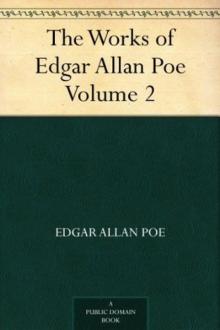 The Works of Edgar Allan Poe — Volume 2
The Works of Edgar Allan Poe — Volume 2 The Works of Edgar Allan Poe — Volume 1
The Works of Edgar Allan Poe — Volume 1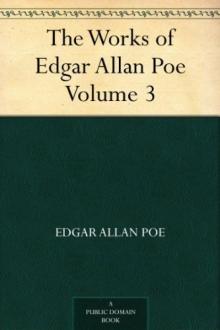 The Works of Edgar Allan Poe — Volume 3
The Works of Edgar Allan Poe — Volume 3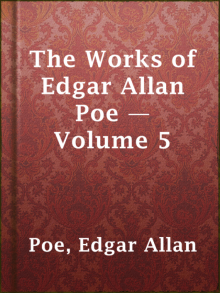 The Works of Edgar Allan Poe — Volume 5
The Works of Edgar Allan Poe — Volume 5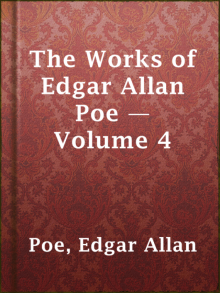 The Works of Edgar Allan Poe — Volume 4
The Works of Edgar Allan Poe — Volume 4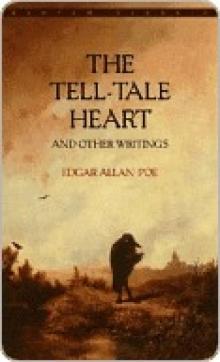 The Tell-Tale Heart
The Tell-Tale Heart The Raven (Penguin)
The Raven (Penguin)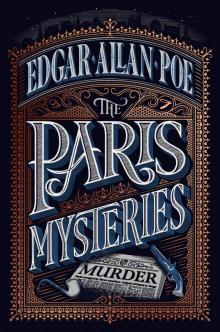 The Paris Mysteries
The Paris Mysteries Tales of Terror from Edgar Allan Poe
Tales of Terror from Edgar Allan Poe The Fall of the House of Usher
The Fall of the House of Usher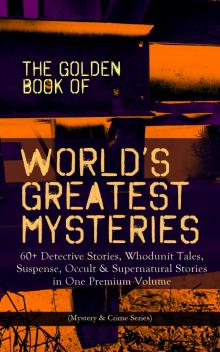 The Golden Book of World's Greatest Mysteries
The Golden Book of World's Greatest Mysteries The Narrative of Arthur Gordon Pym of Nantucket
The Narrative of Arthur Gordon Pym of Nantucket Ligeia
Ligeia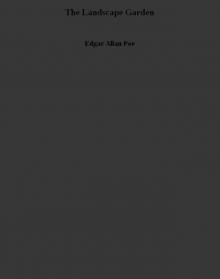 The Landscape Garden
The Landscape Garden Complete Tales & Poems
Complete Tales & Poems Great Tales and Poems of Edgar Allan Poe
Great Tales and Poems of Edgar Allan Poe The Colloquy of Monos and Una
The Colloquy of Monos and Una The Oblong Box
The Oblong Box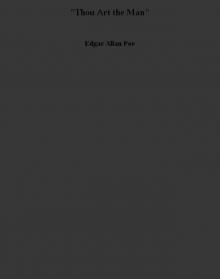 Thou Art the Man
Thou Art the Man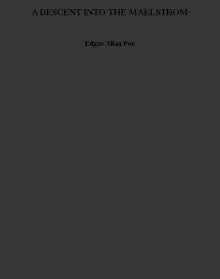 A DESCENT INTO THE MAELSTROM
A DESCENT INTO THE MAELSTROM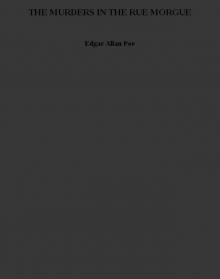 THE MURDERS IN THE RUE MORGUE
THE MURDERS IN THE RUE MORGUE The Business Man
The Business Man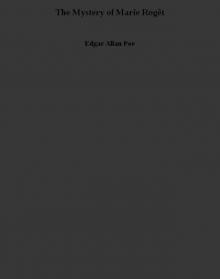 The Mystery of Marie Rogêt
The Mystery of Marie Rogêt Metzengerstein
Metzengerstein The Man That Was Used Up
The Man That Was Used Up William Wilson
William Wilson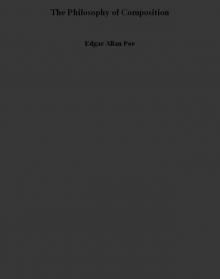 The Philosophy of Composition
The Philosophy of Composition The Portable Edgar Allan Poe
The Portable Edgar Allan Poe Bon-Bon
Bon-Bon A Predicament
A Predicament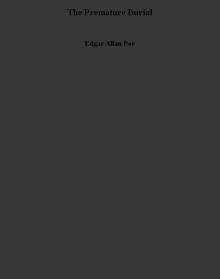 The Premature Burial
The Premature Burial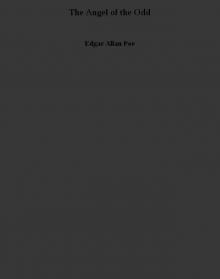 The Angel of the Odd
The Angel of the Odd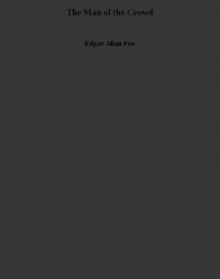 The Man of the Crowd
The Man of the Crowd Never Bet the Devil Your Head
Never Bet the Devil Your Head The Tell-Tale Heart and Other Writings
The Tell-Tale Heart and Other Writings The System of Doctor Tarr and Professor Fether
The System of Doctor Tarr and Professor Fether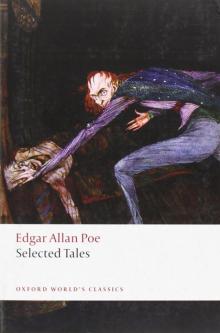 Selected Tales (Oxford World's Classics)
Selected Tales (Oxford World's Classics) Essential Tales and Poems of Edgar Allan Poe (Barnes & Noble Classics Series)
Essential Tales and Poems of Edgar Allan Poe (Barnes & Noble Classics Series) MS. Found in a Bottle
MS. Found in a Bottle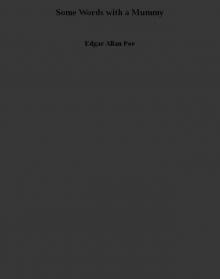 Some Words with a Mummy
Some Words with a Mummy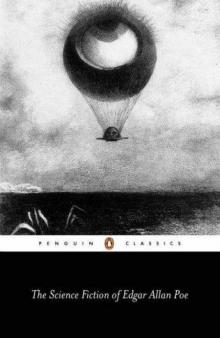 The Science Fiction of Edgar Allan Poe (Penguin Classics)
The Science Fiction of Edgar Allan Poe (Penguin Classics) King Pest
King Pest CRITICISM
CRITICISM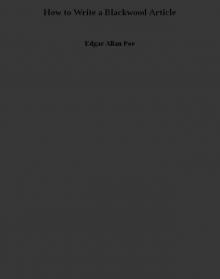 How to Write a Blackwood Article
How to Write a Blackwood Article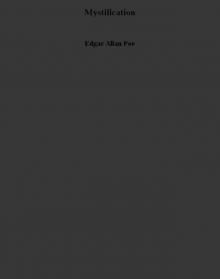 Mystification
Mystification Diddling Considered as One of the Exact Sciences
Diddling Considered as One of the Exact Sciences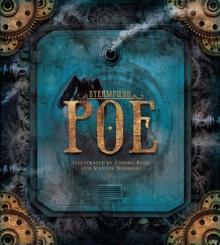 Steampunk Poe
Steampunk Poe The Literary Life of Thingum Bob, Esq.
The Literary Life of Thingum Bob, Esq.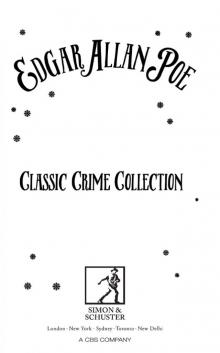 Classic Crime Collection
Classic Crime Collection Complete Stories and Poems of Edgar Allen Poe
Complete Stories and Poems of Edgar Allen Poe Berenice
Berenice The Black Cat
The Black Cat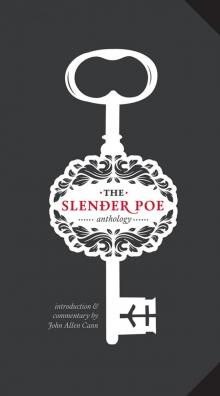 The Slender Poe Anthology
The Slender Poe Anthology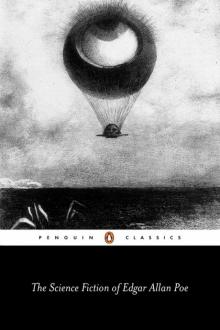 The Science Fiction of Edgar Allan Poe
The Science Fiction of Edgar Allan Poe The Assignation
The Assignation The Thousand-and-Second Tale of Scheherazade
The Thousand-and-Second Tale of Scheherazade The Raven and Other Short Stories
The Raven and Other Short Stories The Spectacles
The Spectacles Hop-Frog
Hop-Frog The Purloined Letter
The Purloined Letter Mellonta Tauta
Mellonta Tauta The Balloon-Hoax
The Balloon-Hoax Landor's Cottage
Landor's Cottage Mesmeric Revelation
Mesmeric Revelation The Pit and the Pendulum
The Pit and the Pendulum